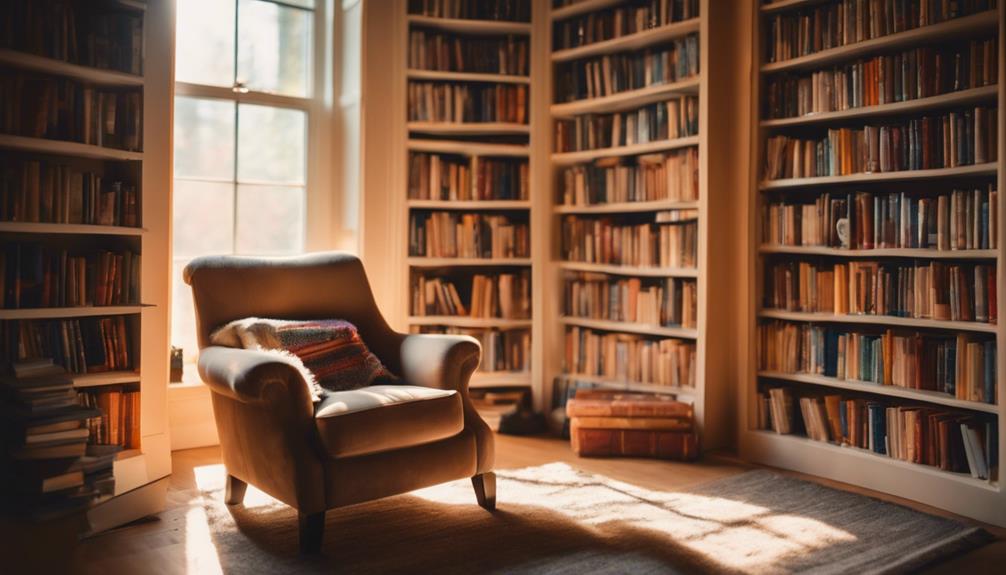To find the best travel discounts for your affordable adventures, use flight comparison websites such as Skyscanner and Google Flights. Book flights on Tuesdays or Wednesdays, and opt for off-peak travel days like Tuesdays, Wednesdays, and Saturdays. Sign up for airline newsletters and set up price alerts for exclusive deals. Consider midweek and off-peak hour flights, keep an eye out for last-minute deals, and maximize savings through loyalty programs. Consider unconventional itineraries, connecting flights, and indirect flights. Remember, maximizing travel rewards is key to affordable adventures. Get ready to uncover more ways to slash your travel expenses!
Key Takeaways
- Use flight comparison websites for the best deals.
- Sign up for airline newsletters and price alerts.
- Consider off-peak travel days and hours.
- Maximize savings with loyalty programs and rewards.
- Explore accommodation options like Airbnb for affordability.
Flight Booking Strategies

When searching for affordable flights, consider utilizing flight comparison websites to find the best deals available. Websites like Skyscanner and Google Flights can help you compare prices from various airlines, ensuring you get the best possible deal for your trip.
Booking your flights on a Tuesday or Wednesday can also work in your favor, as airlines often release deals mid-week, potentially leading to lower fares. Additionally, flying on off-peak days such as Tuesdays, Wednesdays, and Saturdays can result in savings due to decreased demand.
To stay updated on discounts and promotions, signing up for airline newsletters and setting up price alerts is a smart move. Airlines frequently send out exclusive deals to their subscribers, giving you the opportunity to snag the best deals before they sell out.
Flexibility in Travel Planning

To make the most of your travel budget, consider the benefits of embracing flexibility in your travel planning. Adjusting your travel dates by just a day can result in significant savings of up to £100 on flights, as noted by a study from Skyscanner.
Being open to flying midweek or during off-peak hours can also lead to substantial cost reductions in airfare. Additionally, keeping an eye out for last-minute travel deals can offer discounts of up to 40% off regular prices, making spontaneity a budget-friendly option for the adventurous traveler.
Moreover, flexible booking options such as refundable tickets or open-ended reservations enable adjustments without incurring hefty fees. Off-peak travel times, such as early mornings or late nights, often come with lower prices and fewer crowds, allowing you to save money while enjoying a more peaceful travel experience.
Remember to leverage loyalty programs offered by airlines and hotels to maximize your savings and earn rewards for your travel adventures.
Strategic Booking Techniques

Consider employing strategic booking techniques to maximize your savings on travel expenses.
Booking in advance can save you up to 30% on flights, with the best time to book typically being 3 months prior to departure. By taking advantage of seasonal trends and opting to travel during off-peak periods, you can substantially reduce your costs.
Utilize fare prediction tools like Google Flights or Hopper to track price fluctuations and receive notifications for the best time to book. Additionally, consider selecting connecting flights over direct ones, as they often offer cheaper airfares, presenting opportunities for savings.
Understanding flight pricing factors, such as the day of the week, time of day, and demand, can further aid you in strategically booking flights at the most cost-efficient times. By being aware of these variables and staying flexible with your travel dates, you can secure the best deals and make the most out of your travel budget.
Alternative Routes and Airlines

Maximize your savings and explore more affordable travel options by considering alternative routes and airlines for your next adventure. When looking for budget-friendly ways to reach your destination, think beyond the traditional paths. Here are some tips to help you find the best deals:
- Unconventional Itineraries: Explore flying through secondary airports or taking connecting flights to discover potentially cheaper options.
- Hidden Fare Combinations: Search across different airlines, travel dates, and booking platforms to uncover discounted rates through unique combinations.
- Lesser-Known Carriers: Consider flying with budget airlines or lesser-known carriers that cater to price-conscious travelers and offer competitive prices.
- Indirect Flights and Layovers: Opt for indirect routes with layovers, as they can often be more cost-effective than direct flights on major airlines.
Maximizing Travel Rewards

Exploring various avenues to enhance your travel rewards can greatly boost your savings and enrich your overall travel experience. One effective strategy is to capitalize on credit card rewards. By using travel rewards credit cards that offer sign-up bonuses and bonus points for specific categories like travel and dining, you can accumulate points quickly. Additionally, joining airline loyalty programs allows you to earn miles on flights, which can be redeemed for free flights, upgrades, and other perks.
To help you grasp the potential benefits of maximizing travel rewards, take a look at the table below:
| Travel Rewards Tips | Description | Benefits |
|---|---|---|
| Sign-up for travel rewards credit cards | Look for cards with generous sign-up bonuses and bonus points for travel and dining. | Accumulate points faster and access exclusive perks. |
| Join airline loyalty programs | Earn miles on flights, upgrades, priority boarding, and lounge access. | Redeem miles for free flights and enjoy premium services. |
| Utilize frequent flyer miles | Redeem miles for free flights, upgrades, hotel stays, car rentals, and more. | Save money on travel expenses and enjoy upgrades. |
| Utilize hotel, car rental, and credit card partnerships | Take advantage of partnerships to maximize benefits and earn additional rewards. | Access exclusive offers and enhance your travel experience. |
Travel Planning and Budgeting Tips

When planning your next adventure, keep in mind budget-friendly travel destinations, smart booking strategies for savings, and affordable accommodation options.
Choosing destinations with a lower cost of living, booking flights early, and considering self-catering accommodations can all help stretch your travel budget.
Budget-Friendly Travel Destinations
Consider exploring budget-friendly travel destinations such as South Africa, Sri Lanka, Georgia, Montenegro, and Estonia for affordable and diverse experiences.
When looking for the best budget-friendly options, keep these tips in mind:
- Opt for destinations with a lower cost of living: Choosing to visit countries like Georgia or Montenegro can help you stretch your travel budget further.
- Travel during shoulder seasons: Visiting South Africa or Sri Lanka during off-peak times can lead to significant savings on accommodations and activities.
- Book flights in advance: Securing your flights early, especially for destinations like Estonia, can result in more affordable airfare.
- Utilize price comparison websites: Use platforms like Booking.com or Airbnb to find great deals on budget-friendly accommodations in these destinations.
Booking Strategies for Savings
To maximize your travel savings, employ strategic booking techniques for flights, accommodations, and activities. Consider traveling during shoulder seasons to save up to 50% on flights and accommodation costs compared to peak season rates.
Booking flights 6-8 weeks in advance often results in the best prices, while last-minute hotel bookings can yield significant discounts. Make use of price comparison websites like Skyscanner or Google Flights to find the best deals on flights, hotels, and rental cars.
Self-catering options such as Airbnb or Vrbo can be cost-effective alternatives to traditional hotels, especially for longer stays. Setting a budget, conducting thorough destination research, and being flexible with travel dates are key factors in finding affordable travel options that align with your financial plan.
Affordable Accommodation Options
Look for cost-effective lodging options that suit your travel style and preferences to maximize your savings on accommodations. When planning your next adventure, consider the following options to help you find affordable places to stay:
- Self-Catering Options: Explore platforms like Airbnb or Vrbo for economical stays that provide the flexibility of preparing your meals and saving on dining expenses.
- Last-Minute Deals: Keep an eye out for eleventh-hour hotel discounts and consider booking accommodations in advance to potentially secure lower rates and save money for other experiences during your trip.
- Accommodation Choices: Decide between hotels for a more comfortable and relaxing experience or look into house-sitting opportunities for longer stays that offer budget-friendly options with a local touch.
- Match Your Preferences: Make sure your accommodation type aligns with your desired holiday experience. While saving money is crucial, don't hesitate to spend a bit more for added comfort or amenities that enhance your overall stay.
Frequently Asked Questions
How Do I Find the Cheapest Return Flight?
To find the cheapest return flight, compare prices on flight comparison websites like Skyscanner. Book your return on a Tuesday or Wednesday for lower fares. Stay flexible with dates and times, and look out for flash sales.
How to Find the Cheapest Flights and Dates?
When seeking the cheapest flights and dates, spread your wings wide across the calendar, swooping in on midweek fares and off-peak times. Navigate the skies with flight comparison tools, explore alternative airports, and pounce on flash sales for purr-fect savings.
Conclusion
By implementing these strategies and tips, you can discover a world of affordable adventures waiting for you. Remember to stay flexible, utilize rewards programs, and be strategic in your booking.
With creativity and patience, you can find the best travel discounts and make your travel dreams a reality. Happy exploring! By doing thorough research and staying flexible with your travel dates, you can take advantage of last-minute deals and promotions. Another great way to save money on travel is by signing up for travel discount programs and newsletters, which often provide exclusive offers and discounts for members. By following these travel discount tips, you can make the most of your travel budget and experience the world without breaking the bank. Happy exploring!









